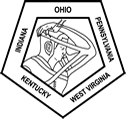<< Back to the abstract archive
Illuminating the Impact of Social Vulnerability on Acute Burn Outcomes
Alexis M. Henderson, MPH; Hilary Y. Liu, BS; Jos� Antonio Arellano, MD; Mare G. Kaulakis, BS; Christopher J. Fedor, MS; Garth Elias, MD; Alain C. Corcos, MD, FACS; Jenny A. Ziembicki, MD; Francesco M. Egro, MD, MSc, MRCS
University of Pittsburgh School of Medicine
2025-01-10
Presenter: Alexis M. Henderson
Affidavit:
Vu T. Nguyen MD
Director Name: Vu T. Nguyen MD
Author Category: Medical Student
Presentation Category: Clinical
Abstract Category: General Reconstruction
Introduction: The social vulnerability index (SVI) scores U.S. census tracts from 0-1 across 16 variables within four themes: socioeconomic status, household composition and disability, minority status and language, and housing type and transportation. Scores near 0 indicate higher vulnerability. This study examines the impact of social vulnerability on acute burn outcomes.
Methods: A retrospective review was conducted on patients presenting with acute burn injuries to a single institution from 2016-2023. Data collection included demographics, distance to burn center, burn characteristics, and outcomes. Multiple logistic regression and analysis of variance analyzed the effect of SVI on burn outcomes.
Results: 2515 patients (mean age 41.2�24.6 years; 82.2% Caucasian, 13.2% African American, 2.14% Native Hawaiian/Pacific Islander, 0.93% American Indian/Alaska Native) were included in this study. The average SVI value was 0.384�0.213, and injury to admission time was 1.02�2.9 days. Most patients (74.0%, n=1861) had 2nd or 3rd degree burns, with mean TBSA of 7.4�12.7%. Most of these burns were 2nd degree (93.0%; n= 1730). Caucasians had the lowest average SVI (0.38�0.21), and Native Hawaiians/Pacific Islanders had the highest (0.45�0.24). SVI was not significantly associated with mortality (χ�=2.47; p=0.120), ventilator days (β=0.559; p=0.217), operations (β=-0.242; p=0.155), TBSA (β=0.195; p=0.892), hospital days (β=-1.098; p=0.608), ICU days (β=-0.764; p=0.445), delays between injury and admission (β=-0.309; p=0.385), or between racial groups (χ�=6.12; p= 0.190).
Purpose: SVI was not linked to poor outcomes. However, confounding individual factors within the SVI should be further assessed and possibly considered among healthcare professionals treating vulnerable populations.



